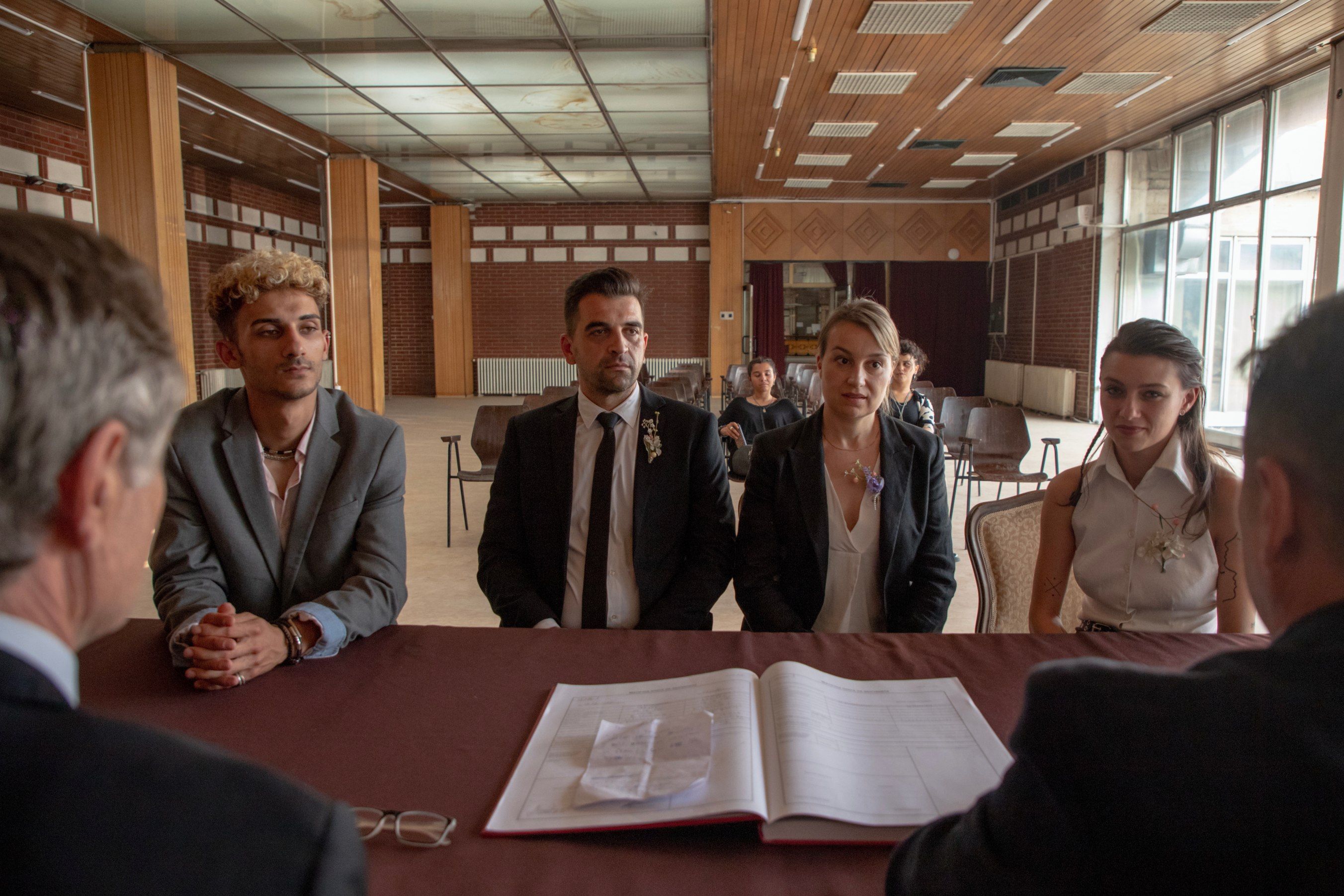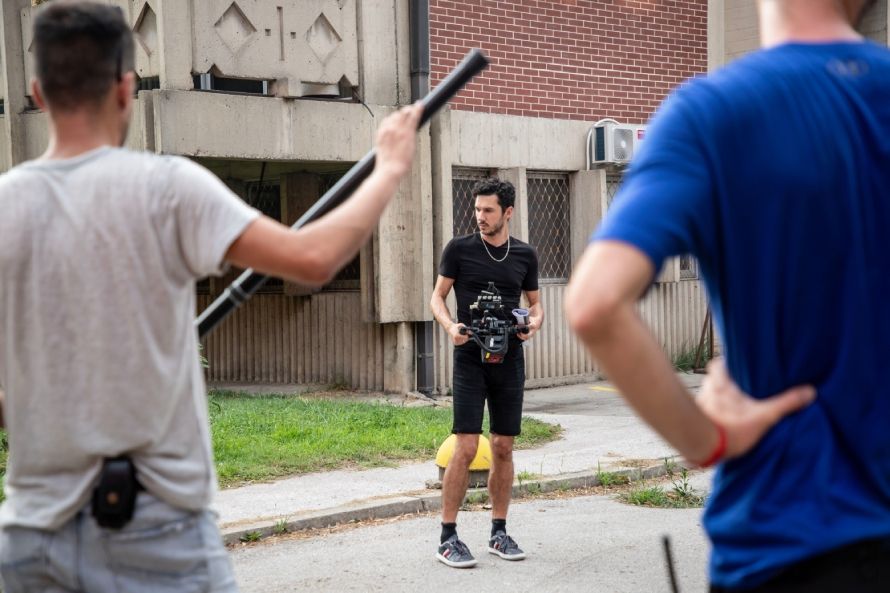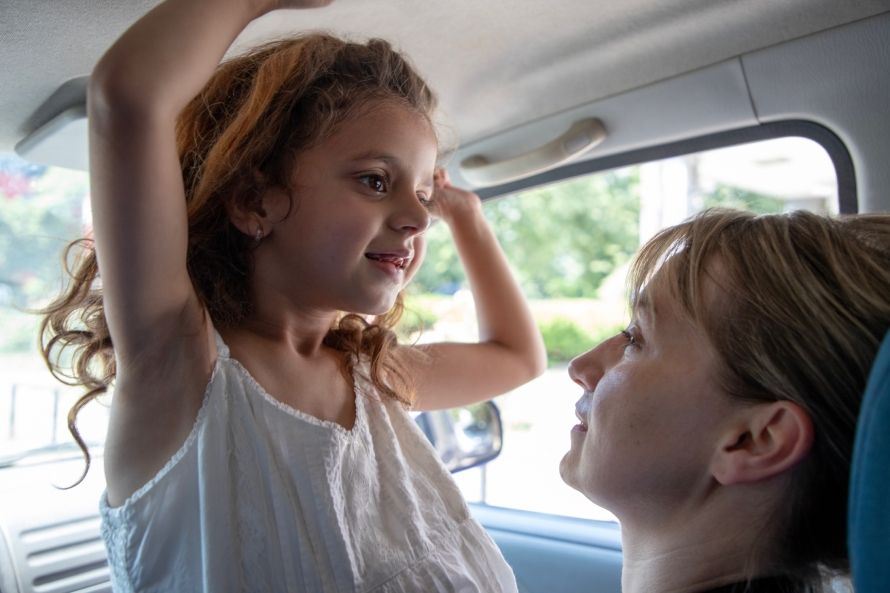
Bringing Family From Script to Screen in Housekeeping For Beginners
An exclusive Q&A with filmmaker Goran Stolevski.
Goran Stolevski’s Housekeeping for Beginners—now playing in select theaters—captures the raucous, loving life of an accidental family. When Dita (Anamaria Marinca) is thrust into the position of raising her girlfriend’s (Alina Serban) two kids (Dzada Selim and Mia Mustafi)—everyone in her household is asked to help out. Ali (Samson Selim), the Roma boyfriend of Toni (Vladimir Tintor), helps raise the rambunctious child and guides the independent teenager. And Dita’s quiet love holds them all together in what The Hollywood Reporter calls “a delightful dramatic comedy.”
Awarded the Queer Lion at the Venice Film Festival, the film, according to Variety, “confirms writer-director Goran Stolevski as a talent to be reckoned with,” especially considering the success of his first two features, You Won’t Be Alone and Of An Age.
We spoke with Stolevski about working with non-professional actors, showcasing the Roma community, and creating an intimate connection with his actors.
Housekeeping for Beginners is playing in select theaters, so get tickets now!
Official trailer for Housekeeping for Beginners
You’ve mentioned you were inspired by a friend who lived in a mixed queer family in Australia. What made you want to set the film in North Macedonia?
The photo was in the 1970s. The reasons one needed a sanctuary household in the '70s in Australia are no longer relevant to how queer people live there today. I really wanted to document a present-day story rather than something set in the past. I wasn't tied to it being set in Macedonia. I would have done it in any country in that region. It played in a queer film festival in Serbia, and the film felt very real for the people there. I really wanted this to be a transporting, energetic experience that is fun and moving for a viewer in Eastern Europe, as well as outside it.
Does your focus on the Roma community reflect your own experience growing up in the area?
When I was a kid in Macedonia, there were 36 kids in my primary school class, and nine of them were Roma. That is literally a quarter of the population. I'm not sure when I decided that many of the characters would be Roma. It was a very organic process. I realized that often, when I watch films from the area, I never see any Roma people on the screen. I wanted to fill in the gaps and come up with a film you don’t normally see. I'm focused on documenting the realities that otherwise go unrecorded. I left Macedonia when I was 12. When I returned a couple of years later, I realized there were parallels between how I was being treated in Australia as a migrant and the Roma people there. When I was in Macedonia, I was part of the majority, but after living in Australia, I started to see parallels to my situation.

Goran Stolevski on the set of Housekeeping For Beginners
You film part of the story in Shutka, which is Macedonia’s only Roma-run area. What was that like?
It was tricky logistically to put together. When you're shooting on the main road, there's no way to control traffic. We adapted to the reality by shooting in a very documentary style. Initially, there was a bit of a concern from the locals because that community is often depicted in a very negative or stereotypical way. But ultimately their concerns are the concerns that I have about how Roma people are portrayed. We had to win their trust, and I'd like to believe we delivered on that trust. A lot of people from Shutka were involved in the film.
How did you end up casting a mix of professional and non-professional actors?
The reality was there are almost no trained actors from a Roma background in Macedonia. We had two casting agents working on the film. Katerina Grubac did all the Roma characters, and Milka Ancevska did the rest. Katarina was on the street every day for literally three months meeting people, photographing them, and gauging their enthusiasm for being in a film. We did not conduct a traditional audition. She would just send me video clips of people talking about themselves.
Samson, who plays Ali, had done some high school plays and just had natural screen charisma. You can just point the camera at him and it's a movie. Mia, who plays Vanesa, was in a children's singing competition. If you look on YouTube, you can see her at age 13 or 14, belting out Amy Winehouse or Beyoncé flawlessly. If she could hold a stage like that on live TV, I was pretty sure she would be fine in this movie. Neither of them had any training, and yet they were able to capture layers of naturalism in their performances. I felt very lucky to have them in the film and to count them as friends in my life, as well.

Dzada Selim and Anamaria Marinca in Housekeeping For Beginners
Although it is an ensemble cast, was there a particular character who steered the story in your mind?
I've always thought Dita was the center, the eye of the storm around whom everyone else operates. While I was writing the screenplay, I felt that the relationship between Dita and Vanesa was kind of the core. Ultimately, this is a film about parenting, and in the making of the film, the character who was perhaps the most maternal was Ali.
Much of the film is beautifully shot in close-ups and shallow focus.
To be honest, I use shallow focus and close-ups in all of my films. But in reality, I adapt my shooting style to what is going on in front of me. I tend to shoot the close-ups first. To me, that's the master shot. Most of the story is in the face of the character. Most of my framing, cropping, and cutting are motivated by trying to present what is going on emotionally with these characters, to see what reality feels like to them. In a story about family, a lot is experienced very close up.
Were there particular films that inspired you?
There was really only one film that I watched partially because I wanted to see how it presented impoverished communities. It was Luis Buñuel's Los olvidados from 1950. It doesn't really relate to what we are doing, but I remembered it when I was writing this story.
The house is a major character in the story.
I had a layout when I was writing the film of it being on two floors. Usually, when I'm writing, I don't want to be too constricted by the layout because it really limits things when you are trying to put together a film on a practical level. We found a house that fit most of our needs, and we didn’t have to adjust anything too much, something that is very important on a limited budget. To create shallow focus in the shots, however, we needed it to be quite a deep space so that we could get a sense of life going on in the background.
What do you gain in telling the story by being also the editor?
When I’m writing, I'm working with words. When I'm directing, I'm working with images. Then when I edit, I rewrite the story again for how I and the characters are breathing. I type out dialog and action immediately as it comes to me. The same is true for editing. The first time I am exposed to the scene, I am able to pick up on the characters’ energy. A lot of this is very intuitive as an editor. To be honest, I don’t understand what directing is unless I'm editing and trying to shape the emotional action in a way that the audience can understand it.
What would you like audiences to take away from the film?
First, I want them to feel a burst of adrenaline, and then I want them to connect to these characters. Most of the film is about how, even when you are resisting being part of a family, there is a primary feeling of wanting to be safe around a group of people, and that is ultimately what family is about.
This interview has been edited and condensed for clarity.